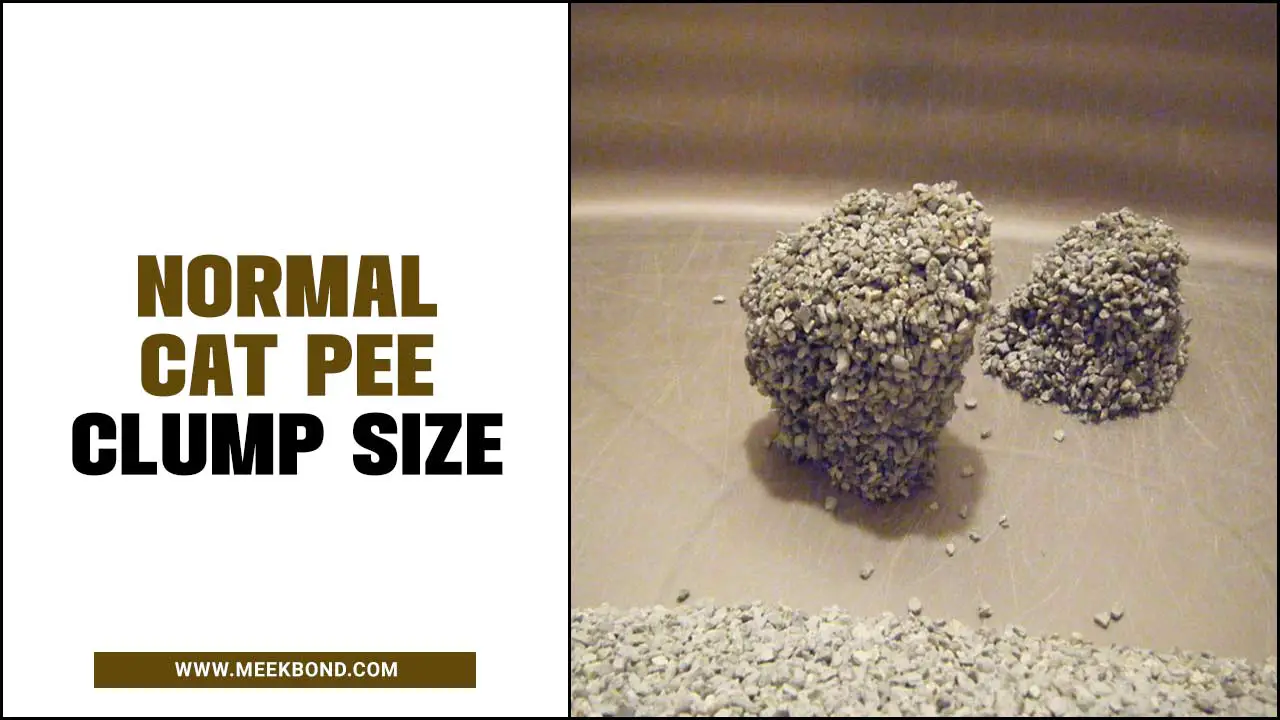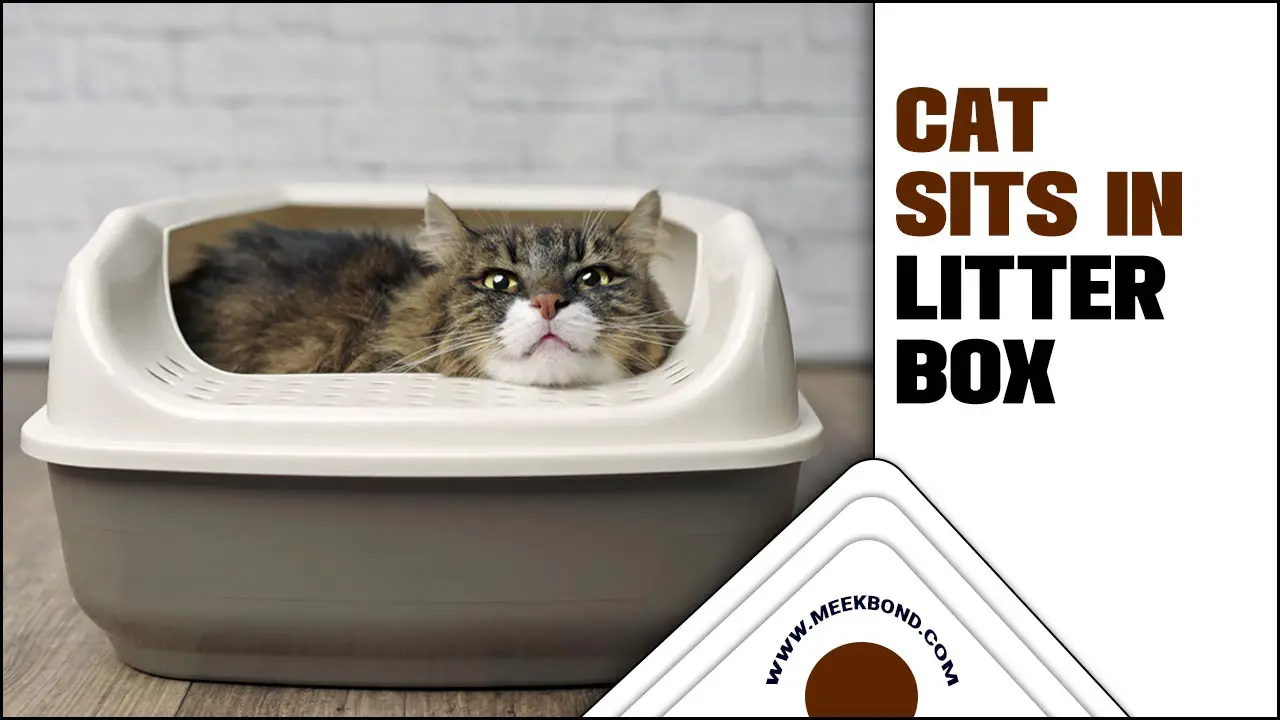Cats are curious and playful creatures that often find themselves in situations that result in injuries. As pet owners, we strive to provide the best care for our feline companions, including tending to any wounds or injuries they may sustain.
However, when it comes to bandaging a cat’s paw, it can be a daunting task. Not only can it be challenging to keep the bandage in place. But it can also be even more challenging to remove it. A common issue many cat owners face is the swelling of their paws after removing a bandage.
This can cause discomfort for the cat and lead to further complications if not properly addressed. We will discuss the steps of how to remove a cat paw swollen from a bandage, including using a claw removal tool to ensure a smooth and painless process for you and your furry friend. Covering the paw and digits from the toes, including the ankle (tarsus) or wrist (carpus), is important.
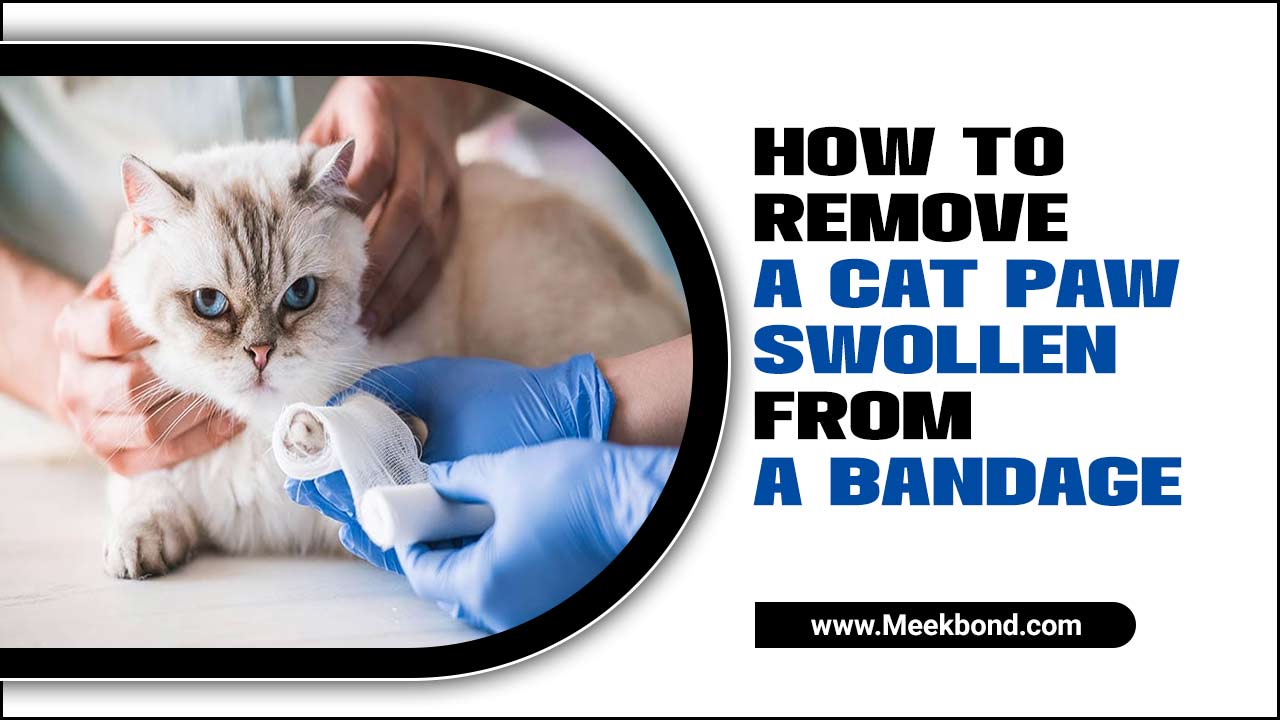
Causes Of A Swollen Paw
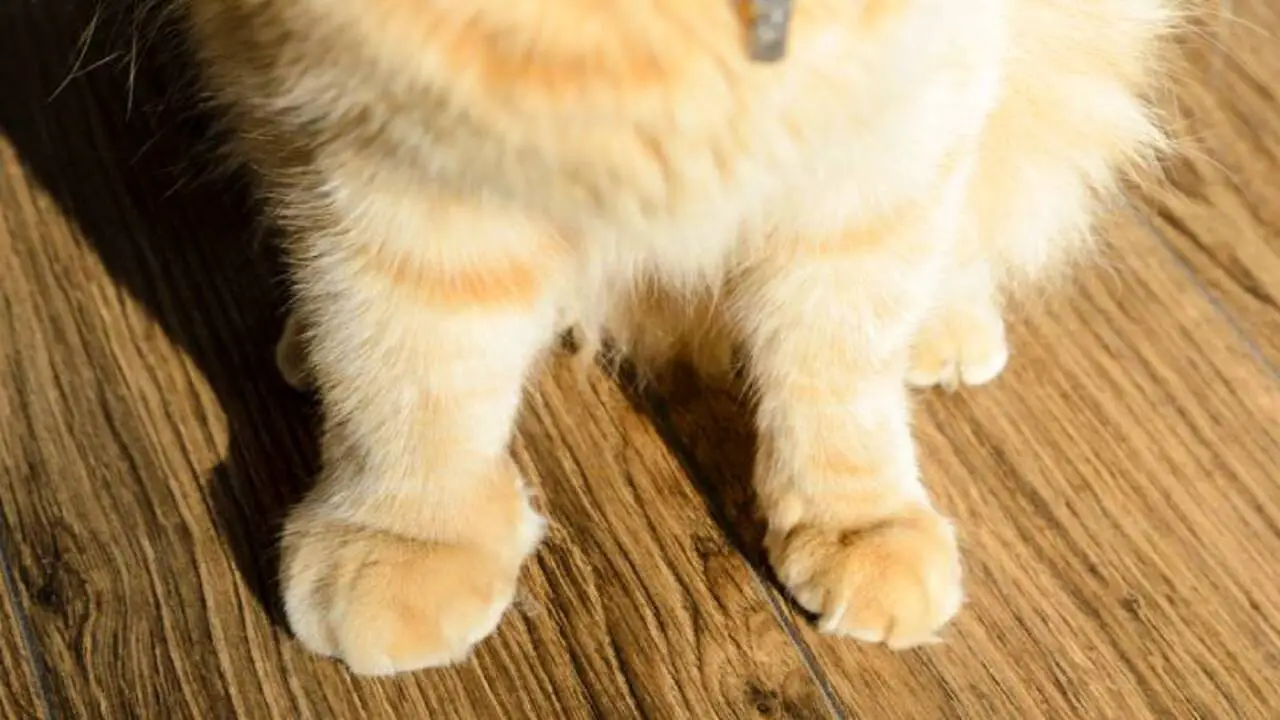
Bacterial infections refer to the growth of harmful bacteria on or inside a cat’s body. A swollen paw can be a frustrating inconvenience caused by several factors. If you know the cause, treating the swelling quickly and easily is much easier. There are a few common causes of a swollen paw. The most common is owie fever, an infection caused by Streptococcus pyogenes.
Other causes include urinary tract infections, fungal infections, and allergies. In some cases, the swelling may also be caused by trauma or injury to the paw. This can cause swelling due to inflammation of the tissues and damage to the blood vessels. Here are some causes below:
Insect Bites And Stings
Insect bites and stings can cause swelling and discomfort in cats, including their paws if your cat’s paw is swollen after wearing a bandage. It is possible that the swelling is due to an insect bite or sting. Insects such as bees, wasps, and ants can cause allergic reactions in cats, leading to localized swelling and redness. If a cat steps on or otherwise encounters an insect, they are allergic to it.
They may begin to experience swollen paws in response. The best way to treat this is by removing the insect immediately. Soak the paw in warm water and apply pressure if needed. Monitoring your cat for any signs of distress or worsening symptoms is important.
If the swelling persists or your cat shows other concerning symptoms, such as difficulty breathing or vomiting. It is best to consult with a veterinarian for further evaluation and treatment.
Foreign Injured Body
Suppose your cat’s paw seems swollen and hurts to move. It is important to take them to the vet as soon as possible. Other causes of a swollen paw can range from playing with your pet too hard, kicking them, or squeezing their paws too tightly.
If the swelling is minor and doesn’t look like it will worsen anytime soon, you can try popping it open using a sterile needle (or freezing it). If this doesn’t work, you must examine your cat further.
Punctures, Lacerations, Or Bruises
Cats are natural climbers, which can lead to them accidentally getting punctures, lacerations, or bruises. Bruises can also develop from falls or collisions with objects, including broken glass. So, taking your cat to the vet is important if you notice any swelling, redness, or pain.
If you suspect your cat has a broken bone or fractured bone, it is best to have them X-rayed immediately for a proper diagnosis. Additionally, it is important to keep sharp objects, such as broken glass, out of your cat’s reach to prevent any potential injuries.
Sprains, Fractures, And Dislocations
Cats’ most common injuries are sprains, fractures, and dislocations, which might surprise you. Cat owners should watch their feline friends closely, who account for many emergency department visits due to injury.
A sprain is when the ligaments that hold a joint together stretch or tear. A fracture is when one or more bones in your body break. Accidental falls, violent seizures, or a cat pulling too hard can cause injury to the shoulder joint, resulting in dislocations.
If you notice any of these symptoms in your pet, it’s important to take them to see their veterinarian as soon as possible so they can get treated and released back into your care healthy and sound.
Nail Overgrowth
Suppose you’re noticing that your cat’s nails are growing excessively. There are a few things you can do to get them under control. One of the most common causes of nail overgrowth is poor diet and health problems – make sure to feed your cat quality food and give them adequate vet care if necessary.
If these measures don’t work, try home remedies such as soaking their nails in water and vinegar or using nail clippers. In more severe cases, veterinary help may require treating the overgrowth’s underlying cause.
Constriction
If the bandage on your cat’s paw is too tight, it will lead to swelling and potential infection or amputation. To avoid this from happening, be sure to loosen the bandage until it pops out easily gradually. Once you remove it, clean the wound with soap and water and apply a bandage if necessary. Keep a first-aid kit nearby in case of emergencies.
Cancer
If your cat’s paw swelling has become an increasing problem, it is important to check it out immediately. Cancer may be the cause and, if left untreated, can lead to a poor outcome. Most cats suffering from cancer will require surgery and chemotherapy for their health to improve. With good treatment, most of them make a full recovery.
How To Remove A Cat Paw Swollen From A Bandage: Easy 6 Steps
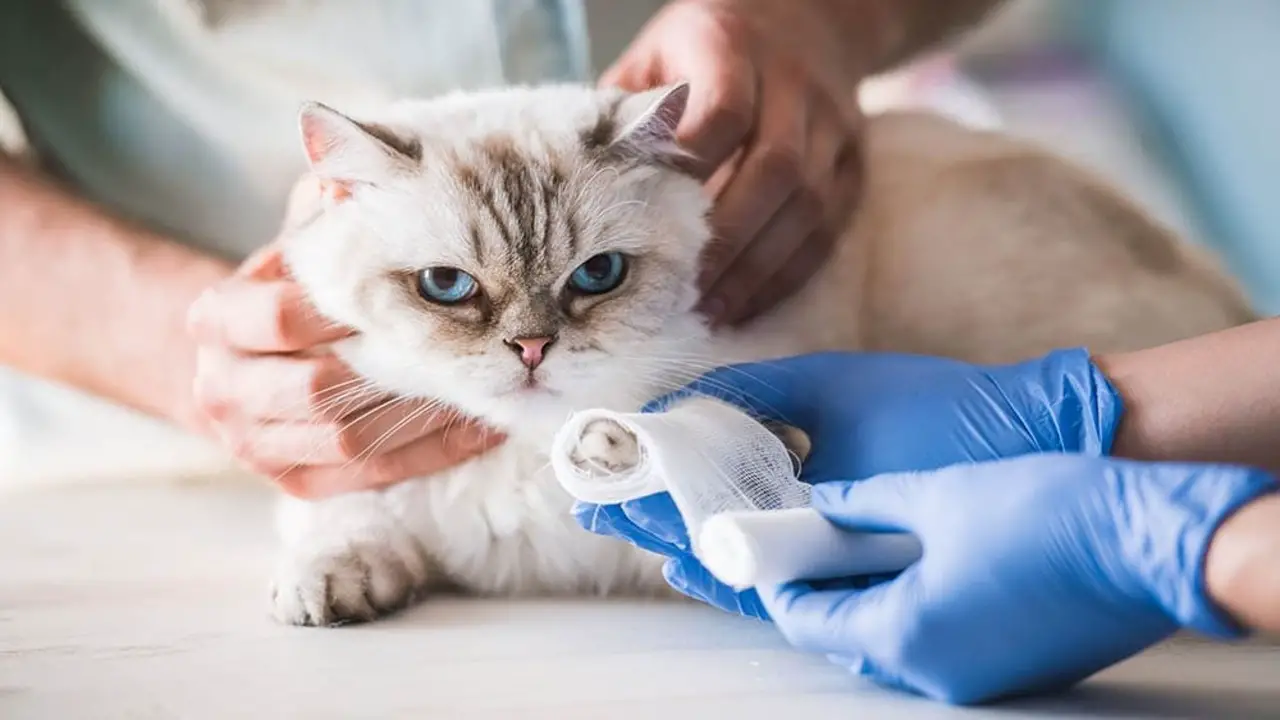
Removing a swollen cat paw from a bandage can be a delicate process. But it can be done safely and efficiently with the right steps. Remember, it’s always important to prioritize your cat’s well-being and seek professional veterinary advice if you have any concerns about their health or healing process. Here are six easy steps on how to remove a cat paw swollen from a bandage:
- Remove the bandage as quickly and easily as possible. If it’s taped in any way, try to remove it without damaging the tape.
- Soak the paw in warm water for about 15 minutes.
- Apply antibiotic ointment to the affected area multiple times daily until the swelling worsens, or take the cat to the veterinarian for assessment.
- Elevate the paw whenever possible to reduce inflammation and pain. You can do this by putting it in a bowl of warm water or making an elevated bed out of newspapers and towels.
- Keep a close eye on the cat paw – if there is any sign of infection, immediately take it to the veterinarian for treatment.
- Apply a bandage as necessary to keep swelling and infection at bay.
Another Way To Remove A Cat Paw Swollen From A Bandage
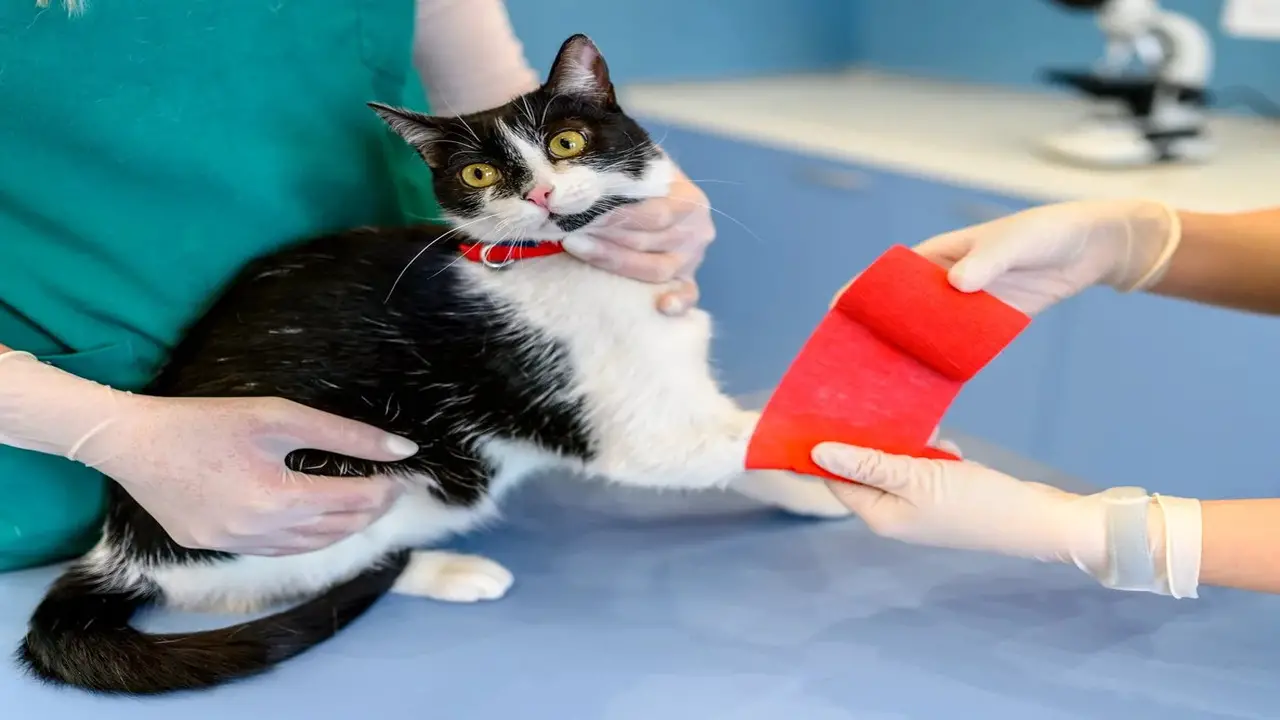
When dealing with a cat paw swollen from a bandage. There is another method you can try to remove it safely. There are a few ways to remove a cat paw swollen from a bandage. If the paw is healthy, you can attempt to take it off yourself by carefully cutting away the bandage. If the paw is unhealthy or infected, you must take it to a veterinarian for treatment. Here are three methods below:
Method 1: Apply Pressure
When dealing with a cat paw swollen from a bandage, applying pressure and compression can effectively reduce swelling and promote healing of the paw injury. Gently press on the swollen area using a clean cloth or your hand. The pressure helps to improve circulation and can aid in reducing inflammation.
However, it is important to be gentle and not apply too much pressure, which can cause discomfort or further injury. If the swelling persists or worsens, it is best to consult a veterinarian at a veterinary clinic for further guidance and treatment options.
Method 2: Cut The Bandage
Cutting the bandage is another way to remove a swollen cat paw from a bandage. Suppose your cat’s paw has become swollen while wearing a bandage. It is important to address the issue promptly to prevent further discomfort or complications.
First, carefully examine the bandage to determine any signs of tightness or constriction. If the bandage appears to be too tight and is causing swelling, cutting the bandage may provide immediate relief for your cat. However, it is crucial to exercise caution and use proper tools, such as scissors or bandage cutters, to avoid injuring your cat while removing the bandage.
Method 3: Elevate The Bandage
Elevating the bandage is another effective way to remove a cat’s swollen paw from a bandage. By gently lifting the bandage and placing it on an elevated surface, such as a pillow or cushion, you can help reduce swelling and promote healing. This technique allows for better blood circulation and drainage, which can aid in the reduction of inflammation.
Remember to be gentle and cautious when elevating the bandage to avoid causing any discomfort or injury to your furry friend if you are unsure or uncomfortable performing this procedure. It is always best to consult a veterinarian for proper guidance and care.
What To Do if Your Cat’s Paw Or Leg Is Swollen
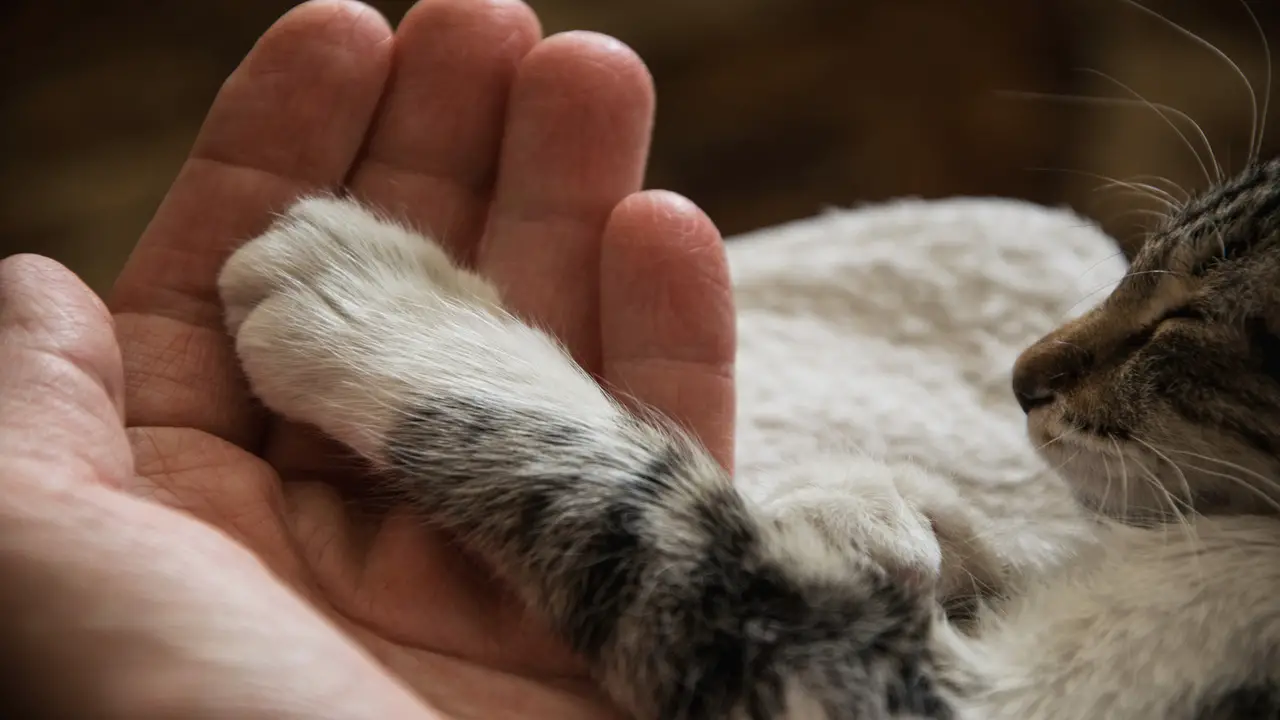
If your cat’s paw or leg is swollen, it is important to take action quickly in order to reduce swelling and promote healing. Here are some steps you can take if your cat’s paw or leg is swollen:
- Visit The Veterinarian: swelling of the paw or leg can indicate an injury, infection, or other medical condition. It is best to visit the veterinarian for proper diagnosis and treatment.
- Apply A Cold Compress: applying a cold compress to the swollen area can help reduce swelling and provide relief. Make sure to wrap the cold compress in a towel or cloth before placing it on your cat’s paw or leg.
- Elevate The Affected Area: elevating the affected area, such as on top of a pillow or cushion, can help reduce swelling and promote healing.
- Exercise Caution When Removing A Bandage: if the paw or leg is wrapped in a bandage, do so as not to cause further injury or discomfort to your cat.
Following these steps can help relieve your cat’s pain and promote healing. However, if the swelling persists or worsens, it is best to consult a veterinarian for further guidance and treatment.
Bandage And Splint Care In Cats
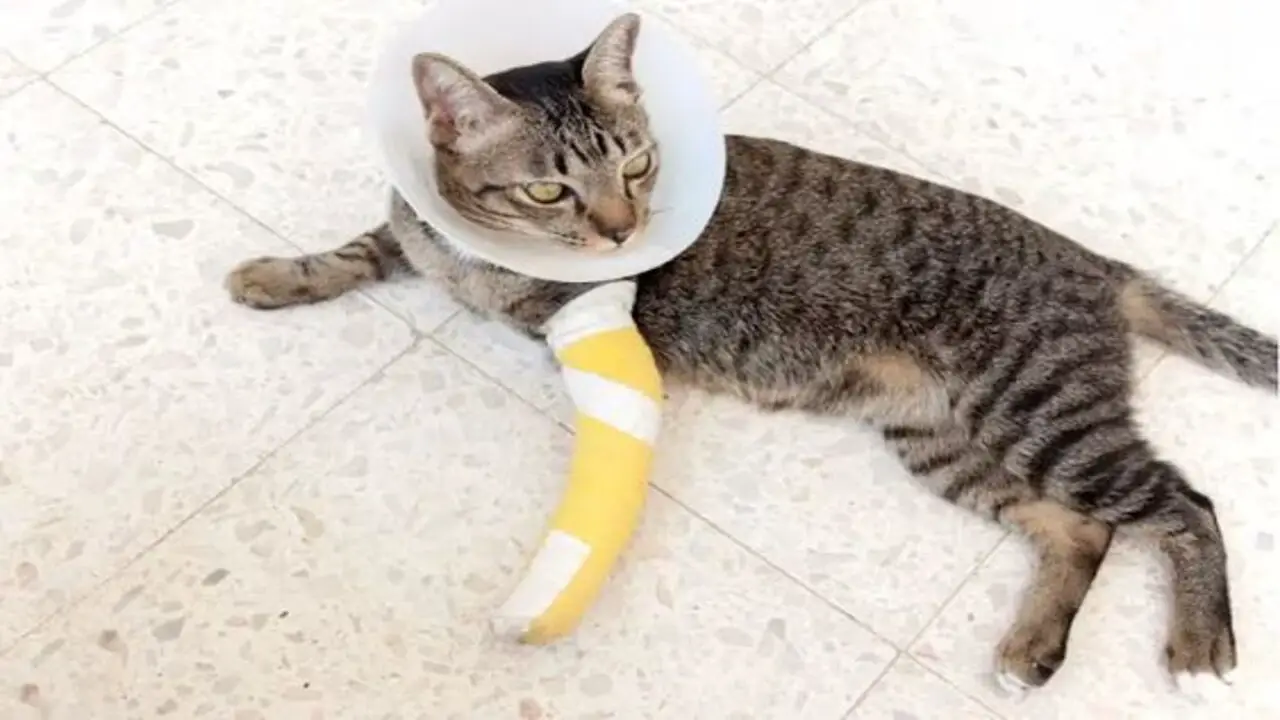
Regarding bandage and splint care in cats, the type of injury will determine the necessary steps for providing supportive care. Venous occlusion occurs when the blood flow through the veins is blocked or restricted, leading to swelling and discomfort for your furry friend.
The condition can affect the cephalic vein, which runs along the front of the forelimb. Bite wounds, for example, may require cleaning the wound with a mild antiseptic solution and applying a topical medication to prevent infection. It is important to monitor your cat’s pain level and provide appropriate pain management, such as prescribed medications from your veterinarian.
Common symptoms of discomfort or pain include decreased appetite, lethargy, or changes in behavior. You should use adhesive tape cautiously on cats, as it can easily tangle or irritate their fur. If you notice foul odors coming from the bandage or splint, it may indicate an infection, and you should seek veterinary care immediately. Remember to always consult with your veterinarian or take your cat to a veterinary hospital for proper assessment and treatment of their injuries.
Conclusion
Removing a swollen paw from a bandage can be daunting, but it can be done quickly and easily with the right tools and techniques. It is important to approach the situation carefully and calmly, ensuring the safety and comfort of your feline friend.
You can effectively remove a bandage from your cat’s paw without causing them any unnecessary stress or discomfort. Always consult your veterinarian if you have any concerns or if your cat’s how to remove a cat paw swollen from a bandage does not improve after removing the bandage. With patience and care, your cat will return to their happy and healthy selves in no time.
Frequently Asked Questions:
How Do You Reduce Swelling From A Tight Bandage?
To reduce swelling from a tight bandage, you can try elevating the affected area, applying ice packs for 15-20 minutes every 2-3 hours, and avoiding unnecessary movement. It is important to loosen or remove the bandage if it is too tight to allow proper circulation.
How Do You Fix A Cat’s Swollen Paw?
If a cat has a swollen paw, it is important first to determine the cause of the swelling. If the swelling is mild and there are no signs of injury or infection, applying a cold compress and keeping the cat rested may help reduce the swelling and improve their mobility.
Why Is My Cat’s Paw Swollen After A Bandage?
Your cat’s paw may be swollen after a bandage for several reasons. It could be a reaction to the bandage material or adhesive, causing irritation or an allergic response. Additionally, the bandage may have been wrapped too tightly, restricting blood flow and leading to swelling of the tendons in the upper body.
How Do You Remove A Bandage From A Cat’s Skin?
It is important to approach the process calmly and cautiously to remove a bandage from a cat’s skin. Firstly, ensure that the cat is comfortable and relaxed. Hold the cat’s paw or limb and carefully peel back the bandage, not pulling or tugging at the fur or skin. If the bandage is stuck, use a small amount of warm water or a mild adhesive remover to help loosen it.
How Do You Remove A Bandage Without It Hurting?
To remove a bandage without causing pain, it is best to slowly and gently peel it off in the direction of hair growth. If it sticks to the skin, moisten it with warm water or baby oil to loosen the adhesive and prevent moisture from wicking through to the wound. The first layer of bandage material, dressing, will also help protect the wound and provide padding to the area.

Aquarium passion is all about connecting with the aquatic life and providing education to the public on the importance of these creatures. We showcase a wide variety of marine life through our exhibits as well as working with schools to provide unique learning opportunities for students of all ages.

